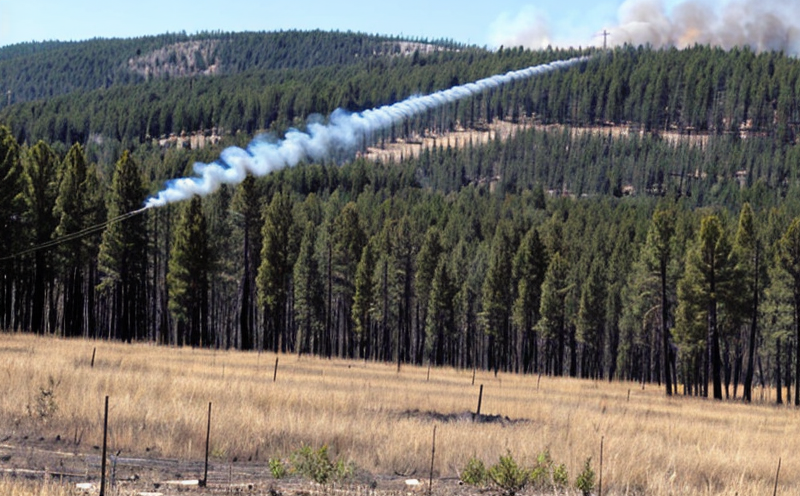Simulating Wildfires for Evaluating Air Quality Monitoring Sensors
Simulating Wildfires for Evaluating Air Quality Monitoring Sensors A Crucial Service for Businesses
In the wake of increasingly frequent and intense wildfires, air quality monitoring sensors have become an essential tool for businesses and governments to ensure public safety and mitigate potential health risks. However, ensuring that these sensors accurately detect and respond to airborne pollutants is a daunting task. This is where Eurolabs Simulating Wildfires for Evaluating Air Quality Monitoring Sensors comes in a cutting-edge laboratory service designed specifically to evaluate the performance of air quality monitoring sensors under controlled conditions.
What is Simulating Wildfires for Evaluating Air Quality Monitoring Sensors?
In simple terms, this service involves creating a simulated wildfire environment within our state-of-the-art laboratory facilities. Our team of expert scientists and engineers then expose various types of air quality monitoring sensors to a range of pollutants typically associated with wildfires, such as particulate matter (PM), ozone (O3), nitrogen dioxide (NO2), and volatile organic compounds (VOCs). The goal is to push these sensors to their limits, testing their accuracy, reliability, and response times under realistic conditions.
Why Simulating Wildfires for Evaluating Air Quality Monitoring Sensors is Essential for Businesses
In an era of increasing regulatory scrutiny and growing public awareness about air quality issues, businesses that fail to ensure the effectiveness of their air quality monitoring systems risk facing significant reputational damage, financial penalties, and even lawsuits. By simulating wildfires in our laboratory, Eurolab helps businesses to
Verify sensor accuracy Ensure that your sensors accurately detect pollutants at concentrations typical of real-world wildfire scenarios
Validate calibration procedures Confirm that your sensors are properly calibrated to meet regulatory requirements
Optimize response times Determine the optimal response time for your sensors to alert authorities and trigger mitigation strategies
Reduce risk exposure Mitigate potential liability by demonstrating compliance with regulations and industry standards
Key Benefits of Simulating Wildfires for Evaluating Air Quality Monitoring Sensors
Here are some key benefits of Eurolabs laboratory service
Realistic testing conditions Our simulated wildfire environment replicates the complex mixtures of pollutants found in real-world wildfires, providing a more accurate assessment of sensor performance
Improved accuracy and reliability By pushing sensors to their limits under controlled conditions, we can identify potential sources of error and optimize calibration procedures
Enhanced public safety By ensuring that air quality monitoring systems are functioning correctly, businesses can reduce the risk of inaccurate or delayed alerts, protecting both employees and the general public
Compliance with regulations Eurolabs service helps businesses meet regulatory requirements for air quality monitoring, reducing potential liability and reputational damage
Frequently Asked Questions
Q What types of pollutants are typically associated with wildfires?
A The pollutant mix in a wildfire can vary greatly depending on factors like fuel type, temperature, and humidity. Common pollutants include particulate matter (PM), ozone (O3), nitrogen dioxide (NO2), and volatile organic compounds (VOCs).
Q How does Eurolabs service differ from traditional laboratory testing?
A Unlike traditional lab testing, our simulated wildfire environment provides a more realistic assessment of sensor performance by replicating the complex mixtures of pollutants found in real-world wildfires.
Q What types of air quality monitoring sensors can be tested using this service?
A We can test a wide range of air quality monitoring sensors, including particulate matter (PM) sensors, ozone (O3) sensors, nitrogen dioxide (NO2) sensors, and VOC sensors.
Q How long does the testing process typically take?
A The length of time required for testing depends on various factors, including the type and number of sensors being tested. However, most tests can be completed within a few weeks.
Conclusion
In conclusion, Eurolabs Simulating Wildfires for Evaluating Air Quality Monitoring Sensors is an essential service for businesses looking to ensure the accuracy and reliability of their air quality monitoring systems. By pushing these systems to their limits under controlled conditions, we help businesses mitigate potential liability, protect public safety, and maintain compliance with regulations. Dont wait until its too late contact Eurolab today to schedule your simulated wildfire testing and take the first step towards a safer, more compliant environment for everyone involved.




